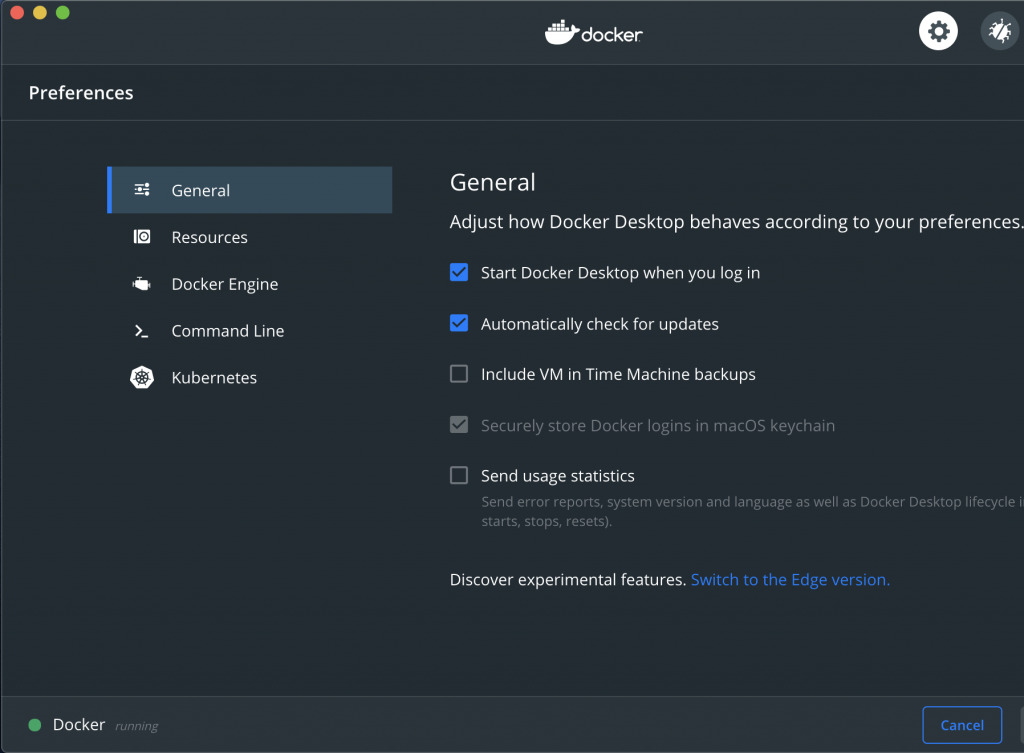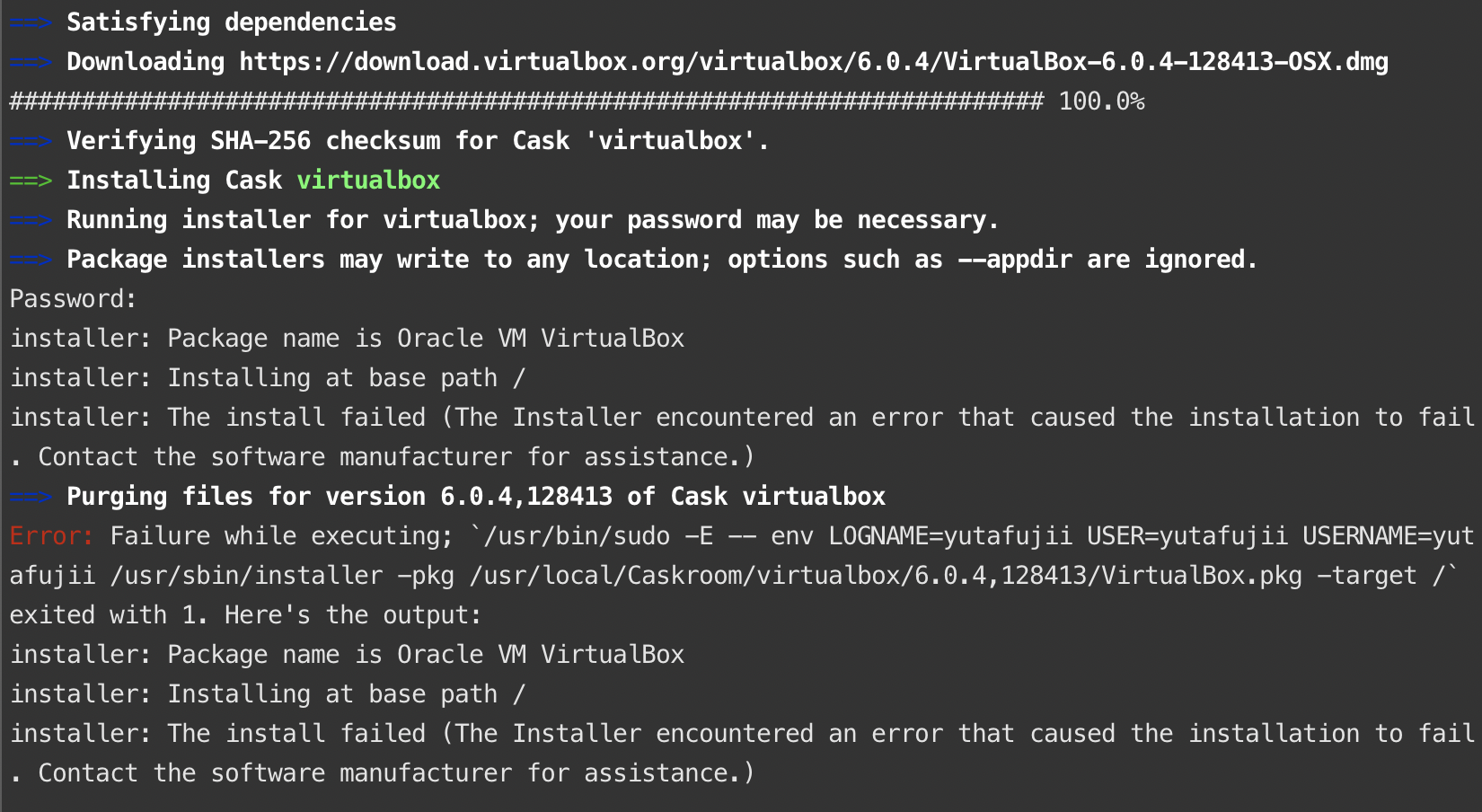
- Docker macos homebrew how to#
- Docker macos homebrew for mac#
- Docker macos homebrew install#
- Docker macos homebrew update#
- Docker macos homebrew software#
To resolve this, follow the following steps. Compare Homebrew VS Docker and find out whats different, what people are saying, and what are their alternatives. However, after Brew has installed Docker, the docker command (symbolic link) may not be available at /usr/local/bin. docker -versionĪs mentioned before, Homebrew installs packages to their directory and then symlinks their files into /usr/local (on macOS Intel). Starting then, all brew cask commands succeeded but displayed a warning informing users that the command would soon be disabled.

Use the command below to verify the installation was successful. I can clear up a few things: brew cask commands were deprecated on with the release of Homebrew 2.6.0. Featured on Meta Our Design Vision for Stack Overflow and the Stack Exchange network. This command will download the docker package, run the Docker installer, and open the GUI to set up configurations. docker macos homebrew or ask your own question. Otherwise, follow the directions for the User.
Docker macos homebrew how to#
Under Choose how to configure the installation of Dockers CLI tools, I selected System so that Docker CLI tools are installed under /usr/local/bin.
Docker macos homebrew install#
Now that Homebrew is installed to install Docker, execute the below command. Check how Dockers CLI tools are installed and make sure they are in the right PATH. You’ll install system tools and desktop applications from the command line interface. In this tutorial you’ll install and use Homebrew on your Mac. You’ll use Homebrew to install developer tools like Python, Ruby, Node.js, and more.
Docker macos homebrew update#
If you dont want to update to a newer macOS version, you can install an older version of Docker Desktop which still works on macOS Catalina.
Docker macos homebrew software#
Homebrew can be installed by running the command below in the terminal. Homebrew is a package manager for macOS which lets you install free and open-source software using your terminal. It seems that Docker Desktop 4.16 does not support macOS Catalina (10.15) any more. Homebrew installs packages to their directory and then symlinks their files into /usr/local. It’s an open-source software package management system that we can use to install applications on macOS. Docker offers a native application that we can install under the Applications directory and create symlinks in /usr/local/bin. Use Homebrew to Install Docker in macOSĭocker supports the most recent versions of macOS, including macOS Big Sur, macOS Monterey, and macOS Catalina. It will remove everything not listed or depending on the packages in the file. Edit the file then keep only the packages you need. But also for doing a cleanup of unused packages. If you want to install a nightly build, click Nightly Builds and. The Version field displays only tagged releases.

The most recent Grafana version is selected by default. Select the Grafana version you want to install. This file can be used to install the same software automatically. To install Grafana on macOS using the standalone binaries, complete the following steps: Navigate to the Grafana download page. However, other projects aim to diversify the offer in the container management market, and Podman is one open-source project that has recently become popular. brew 'python3' brew 'curl' brew 'tmux' brew 'neovim'. Due to this, setting up Docker across all platforms has incredibly been simplified, including macOS and Windows. For most developers and DevOps professionals, Docker is a platform synonymous with app containerization. We have seen widespread adoption of Docker as the ultimate containerization platform in the recent past. They provide developers with the ability to package applications and dependencies in an isolated environment. Before we get started, there are (at least) two ways to install Jenkins on your macOS system that we’ll review in this article: using the Homebrew package manager or using Docker. You may be left with some dependency packages that also need removal, but the core imagemagick package will have been deleted.Docker containers have, without a doubt, revolutionized the way we develop and deploy our applications. Then delete /usr/local/bin/imagemagick and it's gone. Cellar/imagemagick and delete those symlinks. Note that you will have to create a Docker ID and log in to get access to the download.
Docker macos homebrew for mac#
If you wanted to uninstall it by hand you'd just need to look in /usr/local/bin for any files that linke to. Docker: Download and install Docker for Mac from the docker store. The homebrew sandboxing does a very good job of making for clean uninstalls from your system. With brew I find the simplest approach is often the best: I want to reinstall something then I should remove it first with uninstall and put it back with install.

I'd do the brew uninstall imagemagick first before doing an install. It doesn't remove files from disk like the uninstall action does. The -force option for the install action just overwrites any existing files on disk if the packages you're trying to install already exist.


 0 kommentar(er)
0 kommentar(er)
